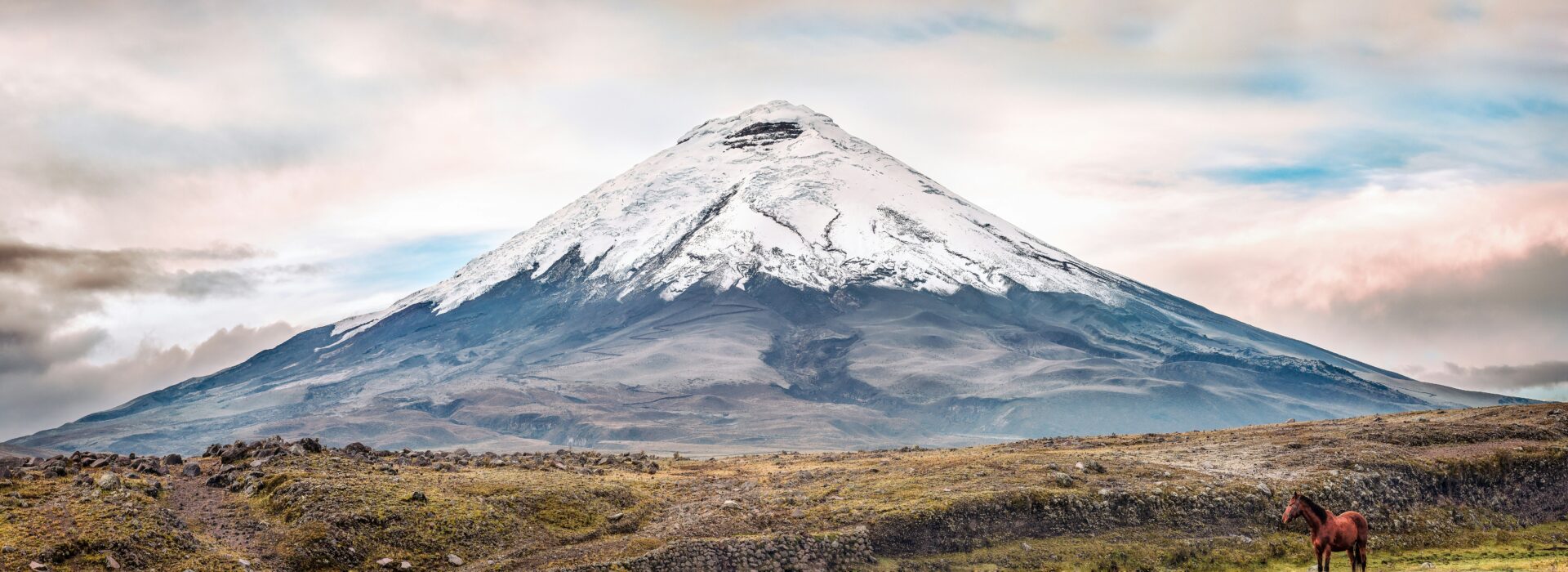Why we love Ecuador
Ecuador may be small, but it holds entire worlds within it. Swim beside sea lions, watch blue-footed boobies perform their courtship dance and walk among giant tortoises on the Galápagos. Then trade ocean breeze for Andean air in Quito’s cobbled streets. Journey into cloud forests alive with birdsong or trace volcanic trails through the highlands where the horizon never seems to end. A country that proves size has nothing to do with scale.
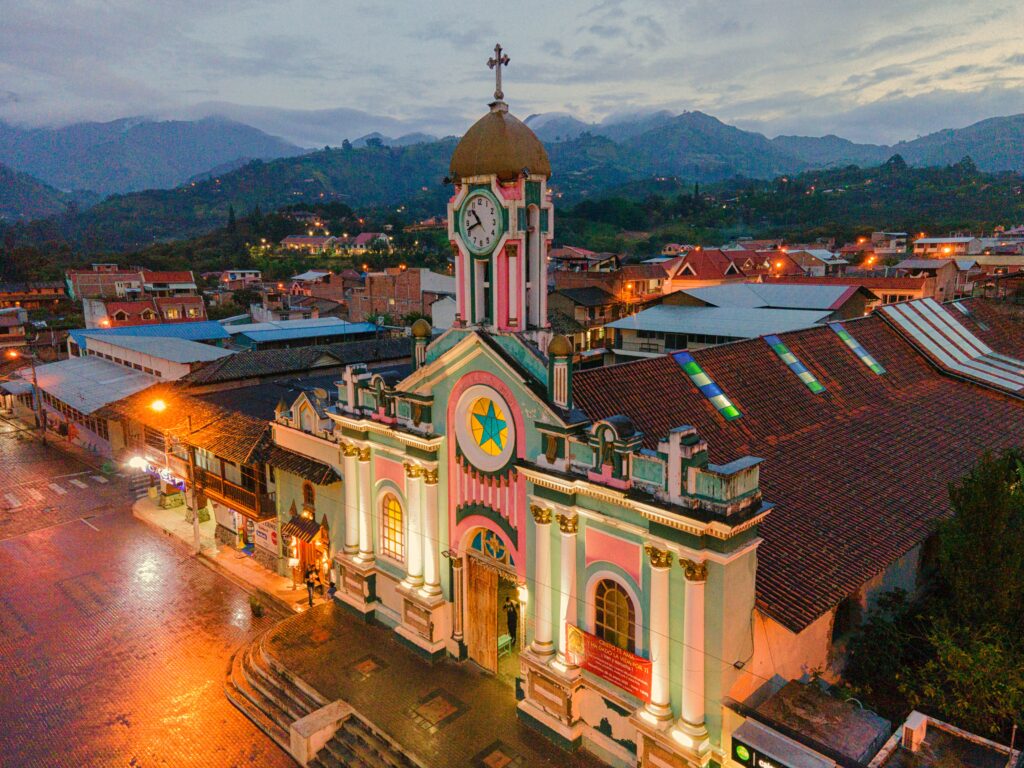
Entry Requirements
Ecuador: British, American and other various passport holders can visit Ecuador without a visa for up to 90 days within any 12‑month period. If you plan to stay longer, you’ll need to apply for an extension through the Ecuadorian immigration authorities. Your passport must be valid for at least six months from your arrival date in Ecuador and ensure you have at least one blank page available for entry and exit stamps.
You may be asked to show proof of your reason for travel, accommodation details, onward or return flights, and enough funds to support your stay. Be sure your passport is stamped on arrival – if it’s not, you could be fined when you leave.
Entry rules can occasionally shift, so it’s always worth double-checking the FCDO’s guidance here before you travel. And if you have any questions, our Operations team is happy to help.
Galápagos: Travel to the Galápagos is subject to a few extra rules:
– You may stay for up to 60 days.
– You’ll need proof of hotel booking or an invitation from your host.
– You must show a return ticket to mainland Ecuador.
– You’re required to complete an online Galápagos Transit Control Card at least 24 hours before your flight – and keep a copy.
– Travel health insurance is mandatory for all foreign visitors.
Health and safety
We are not certified to give medical advice, but we recommend speaking with your doctor or a travel health clinic about your vaccination history and any additional jabs you might need before travelling to Ecuador. For up-to-date guidance, check the Travel Health Pro website.
It’s worth noting that if you’re arriving in Ecuador from Colombia, Peru, Bolivia or Brazil, and have spent more than 10 days in any of these countries, you’ll need to show a valid Yellow Fever vaccination certificate on arrival. Both websites linked above have the latest details.
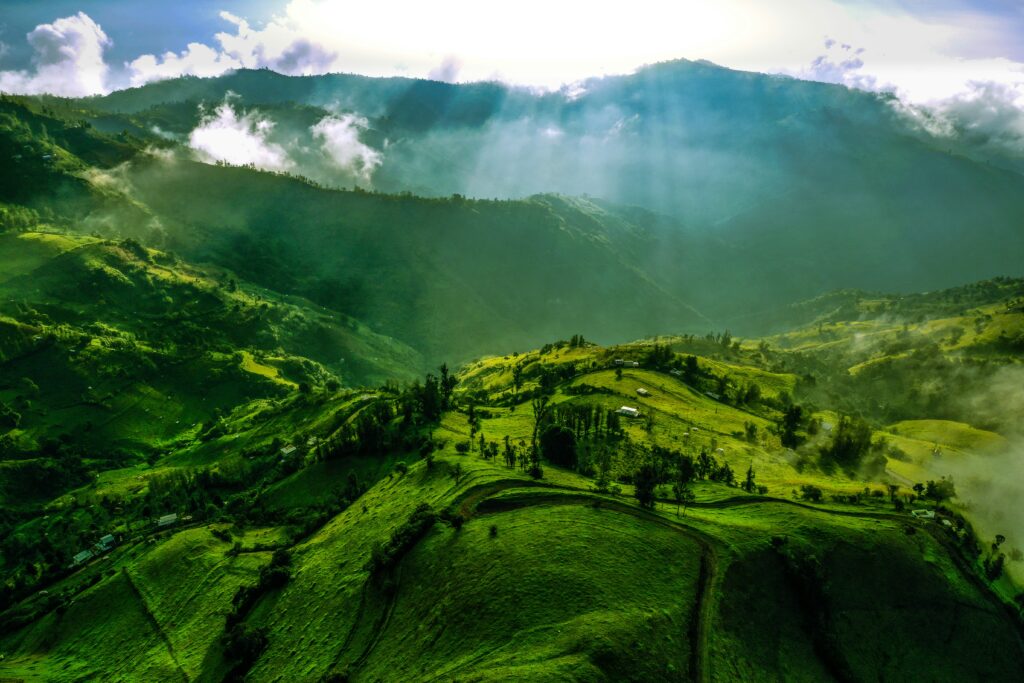
Getting around
Ecuador’s compact size and varied landscapes make it surprisingly easy to explore – whether you’re crossing the Andes or cruising the Amazon. Here’s how to get from A to B:
Domestic Flights: Flying is the quickest way to cover ground, with regular routes connecting Quito, Guayaquil, Cuenca and the Galápagos. Flights are short and usually good value, especially if booked in advance.
Buses: Ecuador’s bus network is extensive and reaches most corners of the country. It’s the go-to option for locals and a budget-friendly way to get around. Expect simple facilities and crowded buses during peak times, but it’s a solid choice for overland travel.
Taxis & Ride-Sharing: In cities, you’ll find taxis on most corners and Uber operating in places like Quito and Guayaquil. Uber is often cheaper and more reliable than street taxis. If taking a taxi, agree on the fare beforehand.
Public Transport: Quito’s trolleybus system is a clean, efficient option for getting around the city. Public buses are widespread and affordable, though they can be busy – especially during rush hour.
Boats: In the Amazon region and along the coast, riverboats and ferries are key transport links. In the Galápagos, boats are essential for island-hopping and getting up close to the wildlife.

Climate and packing
We always recommend packing overnight essentials and medication in your hand luggage, just in case of delays or lost luggage.
Insect repellent is a must in the Amazon and lowland areas. The high-altitude sun can be strong so be sure to bring sunglasses and high SPF sunscreen. Comfortable footwear goes a long way – cobbled streets and forest trails await.
Andes (Quito, Cuenca, Baños)
Climate: Cool, high-altitude conditions year-round.
Pack: Layers, warm jacket for evenings, comfortable walking shoes.
Amazon Rainforest (Tena, Puyo, Cuyabeno)
Climate: Hot, humid, and rainy year-round.
Pack: Lightweight, breathable clothing, insect repellent, rain poncho, waterproof bag.
Galápagos Islands
Climate: Tropical with warm temperatures and ocean breezes.
Pack: Swimwear, hat, sunglasses, sunscreen, light clothing, sturdy shoes for walking.
Coastal Areas (Guayaquil, Montañita)
Climate: Tropical with warm weather year-round and a dry season.
Pack: Breathable clothing, swimwear, sun protection, reusable water bottle.
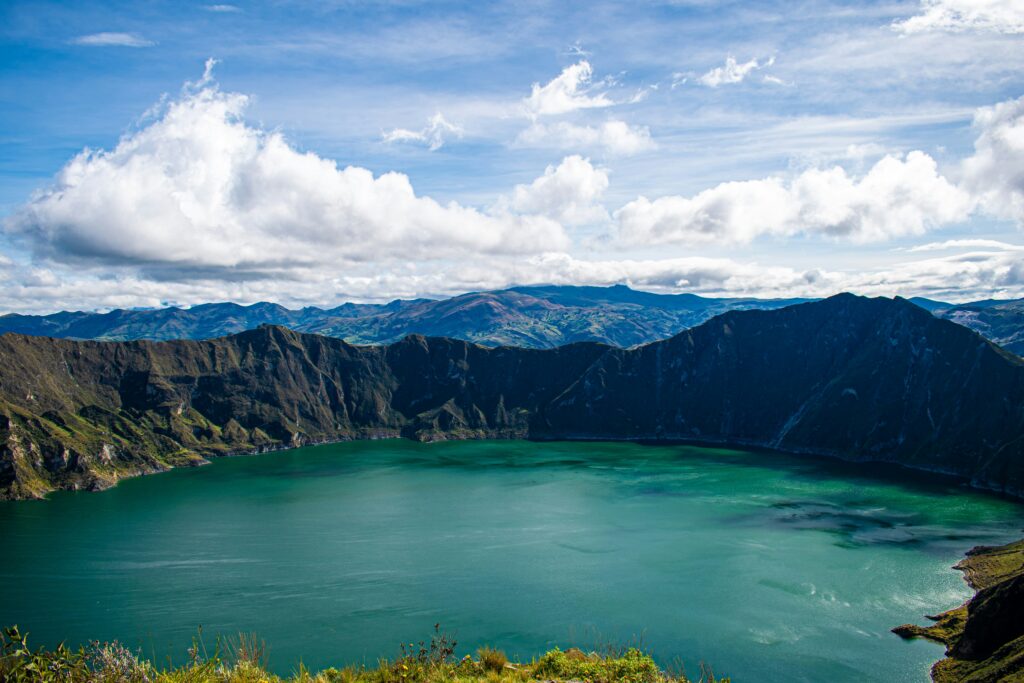
Laws and customs
Ecuador is a welcoming and easy-going country, but it’s important to be aware of local laws and customs to travel respectfully and avoid any issues.
Carry ID: You must carry a copy of your passport (photo and entry stamp pages) at all times. Police may ask for identification.
Drugs: Possession or use of illegal drugs is a serious offence, with long prison sentences even for small amounts.
Environmental protection: Ecuador takes conservation seriously, especially in the Galápagos and national parks. Stick to marked trails, don’t touch or feed wildlife, and avoid taking natural souvenirs like shells or volcanic rock.
Dress and behaviour: While cities like Quito and Guayaquil are modern and diverse, rural and highland areas are more traditional. Dress modestly, especially when visiting markets, churches or indigenous communities.
Photography: Always ask before photographing people, particularly in indigenous communities where permission is expected.
Tipping
Tipping in Ecuador and the Galápagos isn’t mandatory but is warmly appreciated, particularly for good service. Here’s a simple guide to help you navigate it:
Restaurants: A 10% service charge is often added to the bill. If not, leaving around 10% in cash is customary for good service.
Hotels: Porters usually receive around $1–2 per bag and housekeeping $2–3 per night.
Guides and drivers: For private tours, tip your guide $10–20 per person per day and drivers around $5–10 per person per day, depending on the length and quality of the trip.
Galápagos cruises: Tipping is an important part of the culture on board. As a guideline, budget around $20–25 per person per day for the crew and $10–15 per person per day for the naturalist guide, usually given in separate envelopes at the end of the cruise.
Taxis: Rounding up the fare to the nearest dollar is appreciated but not expected.
Money matters
Ecuador uses the US Dollar (USD) as its official currency, which makes things straightforward for most travelers. Credit cards are widely accepted in cities and tourist spots, but it’s smart to carry some cash for smaller towns and local markets where cards might not be taken. ATMs are common in urban areas, though less so in remote places so plan accordingly.
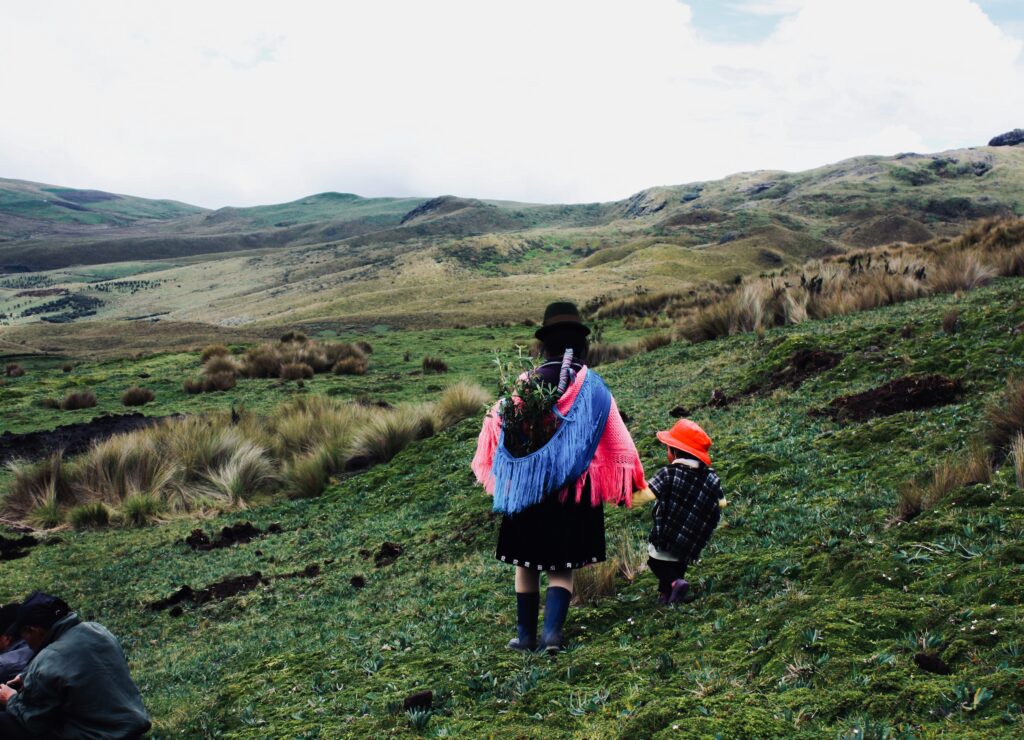
Practicalities
Plug type: Ecuador uses types A and B plugs (two flat pins, with or without a grounding pin) on a 120V, 60Hz system. Bring an adapter if your devices use a different plug.
Time Zone: Ecuador runs on Ecuador Time (ECT), which is GMT -5 year-round and they do no observe daylight savings.
Language: Spanish is Ecuador’s official language, but you’ll also hear Kichwa (an indigenous Quechua language) and a handful of other native languages in some regions. Here are a few handy Spanish phrases for your trip:
Hello – Hola
Thank you – Gracias
Please – Por favor
Yes / No – Sí / No
How much is this? – ¿Cuánto cuesta?
Excuse me / Sorry – Perdón / Lo siento
I need help – Necesito ayuda
Where is the bathroom? – ¿Dónde está el baño?

Food and drink
The highlands bring potato-based dishes and corn treats, whilst on the coast, seafood such as shrimp and conch is common. In the Amazon, you’ll find unique jungle ingredients in stews and grilled fish.
Ceviche: A must-try, especially along the coast. It’s made with fresh fish or seafood marinated in citrus juices and served with sides like popcorn and plantain chips.
Locro de Papa: A comforting potato soup, often served with avocado and cheese, perfect for highland climates.
Hornado: A traditional pork dish, slow-cooked and served with hominy, potatoes, and salad.
Fanesca: A special Easter soup made with grains, beans, and salted cod, reflecting the country’s Spanish and indigenous influences.
At resorts and bigger hotels, you’ll often find a mix of traditional Ecuadorian dishes alongside international favourites, catering to a range of tastes without losing that local touch.
Tap water isn’t safe to drink, so stick to bottled water, which is widely available.
Keep connected
Most travellers use an Ecuadorian SIM or e-SIM. These are available at Quito and Guayaquil airports on arrival, and our partners would be happy to help you collect one on arrival. The best SIM providers in Ecuador are Claro and Movistar. Alternatively, we recommend Airalo for purchasing an e-SIM in advance.
